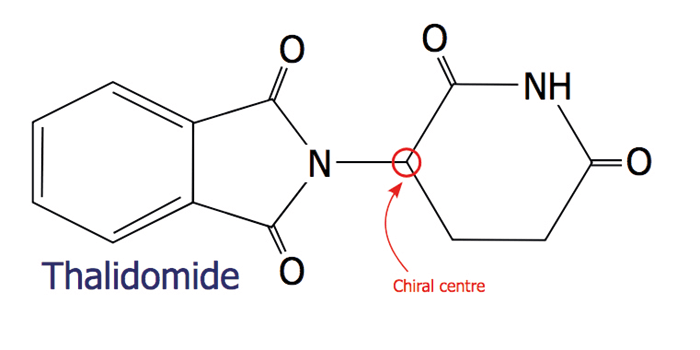Chiral molecules have the potential to “flip” and exist as different enantiomers – non-superimposable mirror images of the original molecule with an identical chemical structure. Though these molecules look identical, their different “handedness” can have dramatic biological effects – as was made painfully clear by the thalidomide scandal. In the 1950s and 1960s, the drug was marketed to pregnant women to treat morning sickness, which its “right-handed” enantiomer did well. But the “left-handed” enantiomer caused thousands of babies worldwide to be born with malformed limbs. Today, the separation of chiral molecules is an expensive process, but an international team of researchers has developed a generic and cheaper method of separating chiral molecules, using magnets (1).
“We found that the interaction of chiral molecules with magnetic substrate is enantio-specific,” says Ron Naaman, Professor in the Department of Chemical and Biological Physics, Weizmann Institute of Science, Israel, and study co-author. “One enantiomer interacts more strongly when the magnet is magnetized in one direction, while the other enantiomer interacts more strongly with the substrate when it is magnetized in the opposite direction.” Current methods to separate chiral molecules are specific to each molecule. “Where high performance liquid chromatography (HPLC) is used, columns must be refreshed once a certain amount of material is passed through them,” says Naaman. “This is time consuming and expensive. In some cases, there are no good methods for separation.”

The new method is based on “chiral induced spin selectively,” which Naaman, and his Hebrew University colleague, Yossi Paltiel, has been working on for the past decade. Electron spin has two directions, often called “up” and “down,” and two electrons can only form a bond if they have opposite spins. If a substrate contains electrons, orientated with a uniform spin – as in magnetic material – then the strength of the interaction between the chiral molecule and the substrate will depend on the spin. Because electron spin orientations differs in chiral pairs, a perpendiculary magnetized substrate can be used to separate chiral pairs. This method could allow the separation of chiral molecules from a mixture of molecules, either chiral or achiral – potentially eliminating the need for expensive and time-consuming HPLC.
References
- K Benerjee-Ghosh at al., “Separation of enantiomers by their enantiospecific interaction with achiral magnetic substrates”, Science (2018). PMID: 29748324.




